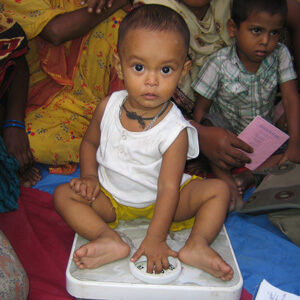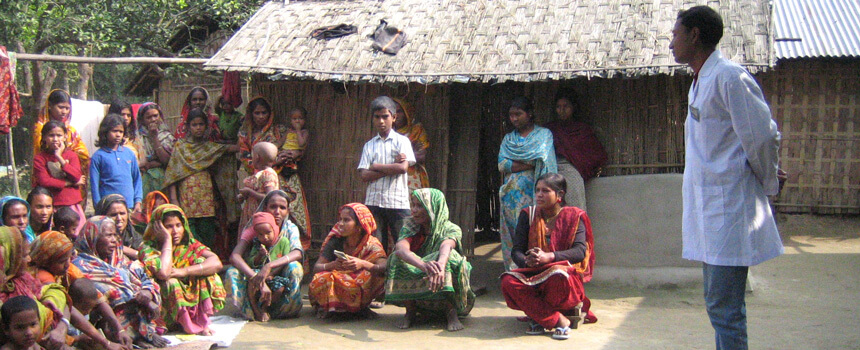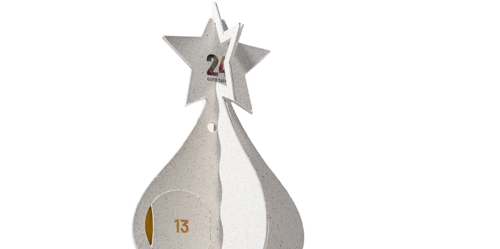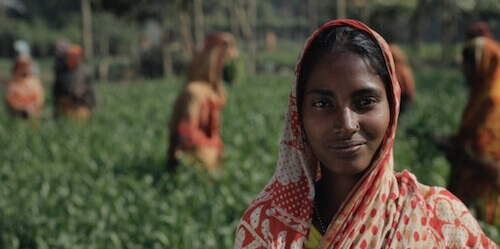 Wenn ein Leben an 35 Cent hängt|When 35 cents mean life or death
Wenn ein Leben an 35 Cent hängt|When 35 cents mean life or death
Medizinische Versorgung für Frauen und Kinder im ländlichen Bangladesch|Medical care for women and children in rural Bangladesh
Stellen Sie sich vor, Sie haben große Schmerzen und müssen dringend zum Arzt, aber Ihr Mann kann Ihnen die 35 Cent Fahrtgeld nicht geben. Stellen Sie sich vor, Sie haben eine Verletzung, aber an der Pforte des Krankenhauses erhalten Sie nur Einlass, wenn sie jemanden vom Personal kennen. Stellen Sie sich vor, Ihr Kind hatte einen Unfall, aber im Krankenhaus wird es erst behandelt, wenn Sie in der naheliegenden Apotheke alle für die Behandlung notwendigen Verbandsmaterialien und Medikamente gekauft haben. Unvorstellbar? In Bangladesch die Normalität.|Imagine you are in pain and urgently need to see a doctor, but your husband cannot afford 35 cents for a bus fare. Imagine you are injured but they only let you into the hospital if you know a member of staff. Imagine your child has had an accident, but at the hospital they will only start operating on him once you have bought all the necessary bandages and drugs at a nearby pharmacy. Unimaginable? In Bangladesh, this is quite common.
Necessity
Zugang zu medizinischer Versorgung für arme PatientInnen im ländlichen Norden Bangladeschs.|Access to medical treatment for poor patients in rural areas of northern Bangladesh.
Activity
MitarbeiterInnen von lokaler NGO organisieren Transport von PatientInnen ins Krankenhaus und helfen dort, eine Behandlung sicherzustellen.|Staff of a local NGO organizes transfers of patients to hospitals and helps to ensure treatment.
Countable effort
Anzahl der betreuten Patiententransfers ins Krankenhaus und Anzahl der PatientInnen denen ein Zugang zu ärztlicher Behandlung ermöglicht wurde.|Number of supervized transfers of patients to hospital and number of patients who have been given access to medical care.
Result
Im Vergleich zum Vorjahr hat sich der Gesundheitszustand in 2400 Familien verbessert. Erwachsene können produktiv zur Einkommenssicherung beitragen.|Compared to the previous year, the state of health has improved in 2.400 families. Adults can contribute to income generation.
Systemic effect
Die Disparität beim Zugang zu staatlichen Gesundheitsleistungen ist reduziert, ökonomische Diskriminierung im Krankenhaus hat messbar abgenommen.|The disparity when it comes to access to public health care services has been reduced, economic discrimination in the hospital has lessened measurably.
Background
Das Problem, dass im ländlichen Bangladesch eine Vielzahl von armen Patienten, vor allem Frauen und Kinder, keinen Zugang zu Gesundheitsversorgung haben, resultiert aus einer Reihe von strukturellen und sozio-ökonomischen Faktoren. Obwohl 70% der Bevölkerung auf dem Land leben, konzentriert sich die medizinische Versorgung zu mehr als 80% in den Städten. Dadurch ist im Ernstfall professionelle Hilfe weit entfernt und mit erhöhten Kosten verbunden (vgl. WHO 2015). Der finanzielle Faktor der Fahrtkosten vom Dorf in die Stadt ist nur der offensichtlichste Teil des Problems. In den staatlichen Krankenhäusern müssen die Patienten alles, was für ihre Behandlung gebraucht wird, vom Pflaster bis zur Bluttransfusion, selbst besorgen und vorab bezahlen. Die Kosten lassen sich vorher nicht abschätzen. Diese Unkalkulierbarkeit stellt arme Patienten schon mental vor unüberwindbare Hürden. Für Frauen kommt erschwerend hinzu, dass ihr familiäres Umfeld ihren Bedürfnissen nicht dieselbe Priorität einräumt wie denen von Männern. 98% der Patienten, die MATIs ambulante Gesundheitshelferinnen aufsuchen, sind Frauen und Kinder, oft mit schwerwiegenden Problemen. Meist haben sie noch nie einen Arzt gesehen. Weil die Familie extrem arm ist, oder auch weil der Mann und die Schwiegermutter, die im Haushalt die Entscheidungen treffen, keinen Handlungsbedarf sehen. Das UN Committee on Elimination of Discrimination against Women (CEDAW) konstatierte 2011 seine „Besorgnis angesichts des begrenzten Zugangs zu Gesundheitsversorgung für Frauen,…, besonders im ländlichen Raum.“ Hinzu kommt die Überlastung der Krankenhäuser. In Bangladesch kommen statistisch auf einen Arzt etwa 3300 Patienten. Wenn man diese Statistik geografisch aufschlüsselt, müsste ein Arzt in den ländlichen Regionen 15.000 Patienten versorgen. Angesichts dessen ist es nicht verwunderlich, dass die Krankenhäuser nicht darauf eingestellt sind, Analphabeten Hilfestellung beim Ausfüllen der Papiere zu leisten.|In rural Bangladesh, many poor patients, mostly women and children, have no access to health care. This is the result of a number of structural and socio-economic factors. Although 70 % of the people live in rural areas, 80 % of health facilities are concentrated in cities. This means that in case of an emergency, professional help is far away and getting to it entails great costs (vgl. WHO 2015).
Buying a bus ticket from the village to the city is just the most obvious aspect. In state hospitals in Bangladesh, patients have to privately organize and pay for all the required medical supplies – from a band-aid to a blood transfusion. The total cost is often hard to estimate in advance. This financial uncertainty creates mental barriers that poor patients find hard to get around. Women have the additional difficulty that their families tend not to give their needs the same priority as those of a man. 98 % of all patients that seek help from MATI’s itinerant health workers are women and children – often suffering from severe problems. In most cases they have never even seen a doctor before. Either because the family is extremely poor or because their husband or mother-in-law who make the decisions in the household see no need to take action.
The UN Committee on Elimination of Discrimination against Women (CEDAW) has voiced its “concern in light of limited access of women to health care […] particularly in rural areas”. Add to this that hospitals are overcrowded: on average there are 3.300 patients per doctor in Bangladesh. Broken down geographically, every rural doctor would have to treat 15.000 patients. With this in mind it is not surprising that hospitals are not able to assist illiterate people with their paperwork.
The good deed
In Bangladesch leben etwa 75% der Einwohner in dörflichen Gegenden, oft ohne Zugang zu ärztlicher Versorgung. In armen Familien scheitert ein Arztbesuch meist schon an den Fahrtkosten zum nächsten Krankenhaus. MATI Gesundheitshelfer behandeln Frauen und Kinder vor Ort und arrangieren in akuten Fällen Transfers ins Krankenhaus, damit Notfälle auch wirklich behandelt werden. Gleichzeitig macht MATI Lobbyarbeit bei staatlichen Stellen, damit mehr Ärzte in die Dörfer entsandt werden.|In Bangladesh, about 75 % of the population lives in villages, often without access to health care. For poor families, a trip to see the doctor usually has to be abandoned because they cannot pay for the bus ticket. MATI health workers treat women and children locally and in urgent cases arrange for transportation to a hospital to be treated there. Simultaneously, MATI lobbies the authorities to send more doctors to villages
Challenge
Die größte Herausforderung ist es, strukturelle Anforderungen des Krankenhauses und die Realität in den Familien aufeinander abzustimmen: Das Krankenhaus vergibt einen Behandlungstermin. Der Ehemann oder die Schwiegermutter der Patientin entscheiden vielleicht am Abend vorher, dass die Frau am Tag des OP-Termins für den Verwandtenbesuch kochen muss. Oder, dass niemand Zeit hat, sie im Krankenhaus zu versorgen, denn alle Pflegeleistungen wie Medikamente besorgen oder Mahlzeiten zubereiten, müssen Angehörige des Patienten übernehmen. Daher müssen die Sozialarbeiterinnen von MATI in Gesprächen alle Familienangehörigen gut auf den Krankenhaustermin vorbereiten, das braucht Zeit.|The greatest challenge is to reconcile the structural requirements of the hospital with the reality in the families: the hospital assigns an appointment; the husband or the mother-in-law might decide the night before, that the wife is needed to cook for relatives that are coming to visit on the day of the operation, or that no one has the time to take care of her in hospital (because all nursing services such as buying medicines or preparing meals are the responsibility of the relatives of the patient). That is why MATI's social workers need to talk to all members of the family and prepare them for the hospital stay. That takes time.

AboutBangladesch|Bangladesh
Dhaka|Dhaka
Capital
156 595 000|156 595 000
Number of inhabitants
1 172 USD|1 172 USD
Gross domestic product per capita per year
142|142
Human Development Index
Bangladesch besteht vor allem aus Schlamm- und Schwemmland der großen Flüsse des Subkontinents, die ins Ganges-Delta münden. Wenn die Überschwemmungen extreme Ausmaße annehmen, können bis zu 75% der Landfläche überflutet werden, da sie tiefer als 10m über dem Meeresspiegel liegen.|Bangladesh is mostly built on mud and alluvial deposites from the major rivers that empty into the Ganges Delta. When floods are extremely high, 75 % of the land surface can be inundated because it lies lower than 10 meters above sea level.
About the organization and further information
Association
MATI e.V.|MATI e.V.
Initiative Transparente Zivilgesellschaft|Transparency International




